20 Movies: Dawn of the Dead (1978 and 2004)
Yes, both versions.
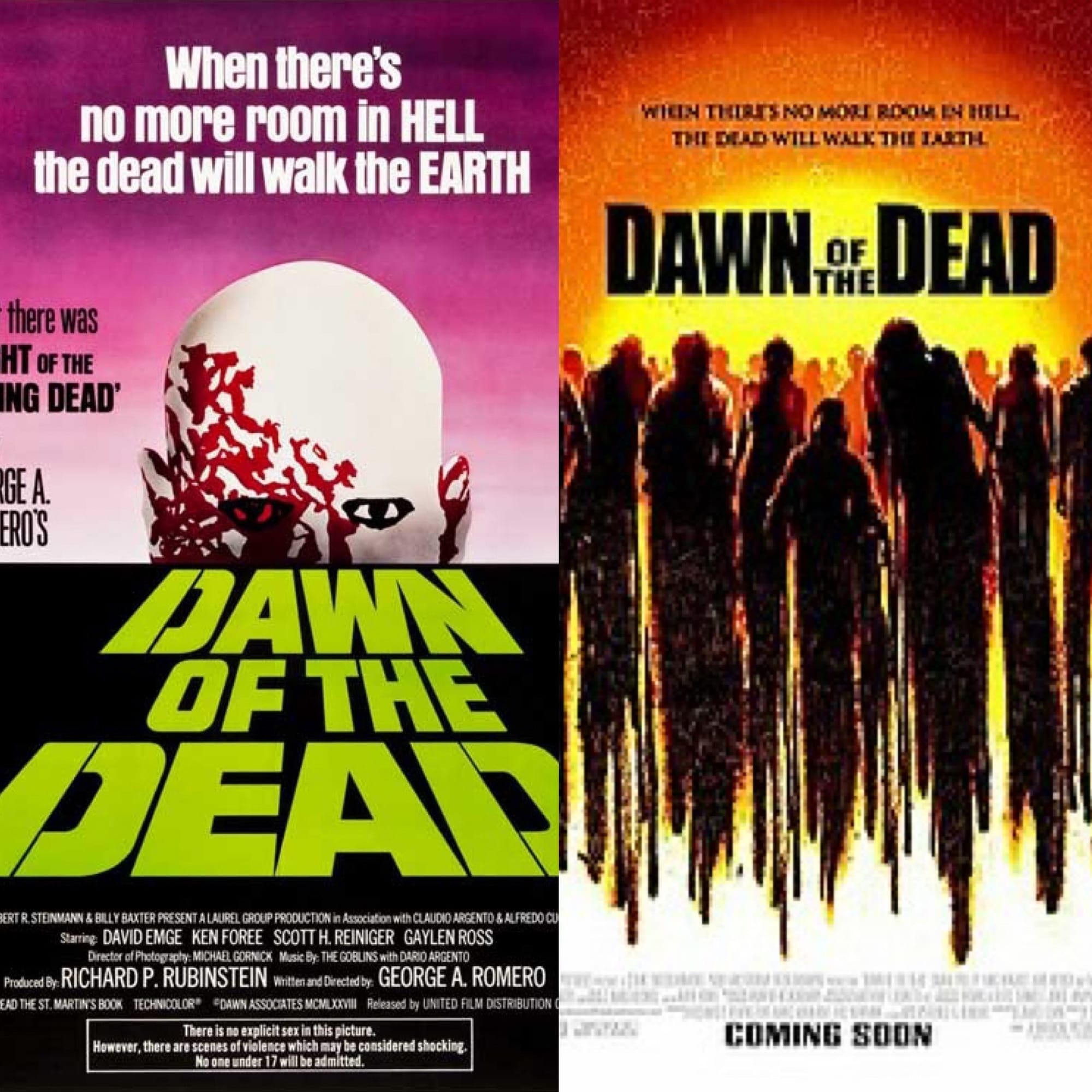
1978: As hordes of zombies overrun the country, neither the cities nor the rural areas are safe. In Pennsylvania, a TV traffic reporter, his girlfriend, and two cops escape from Philedelphia in the station's helicopter. They eventually take shelter in a shopping mall, only to find themselves beset on all sides, by both ravenous undead monsters, and the still-living ones too.
2004: As the city of Milwaukee, and possibly the entire world, is overrun by a plague of the walking dead, a small group of disparate survivors take shelter in the local shopping mall. But as the hordes of the undead grow outside their walls, they realize that if they want to stay alive, then they will need to escape from this safe haven that is very quickly becoming their tomb.
I'm posting about 20 specific movies because of a social media trend-game. The idea was that you choose 20 movies that greatly influenced you, and then you post the poster of each one, one per day, for 20 days. No reviews, no explanations, just the posters. So, I’m doing that.
But I also wanted to talk about them.
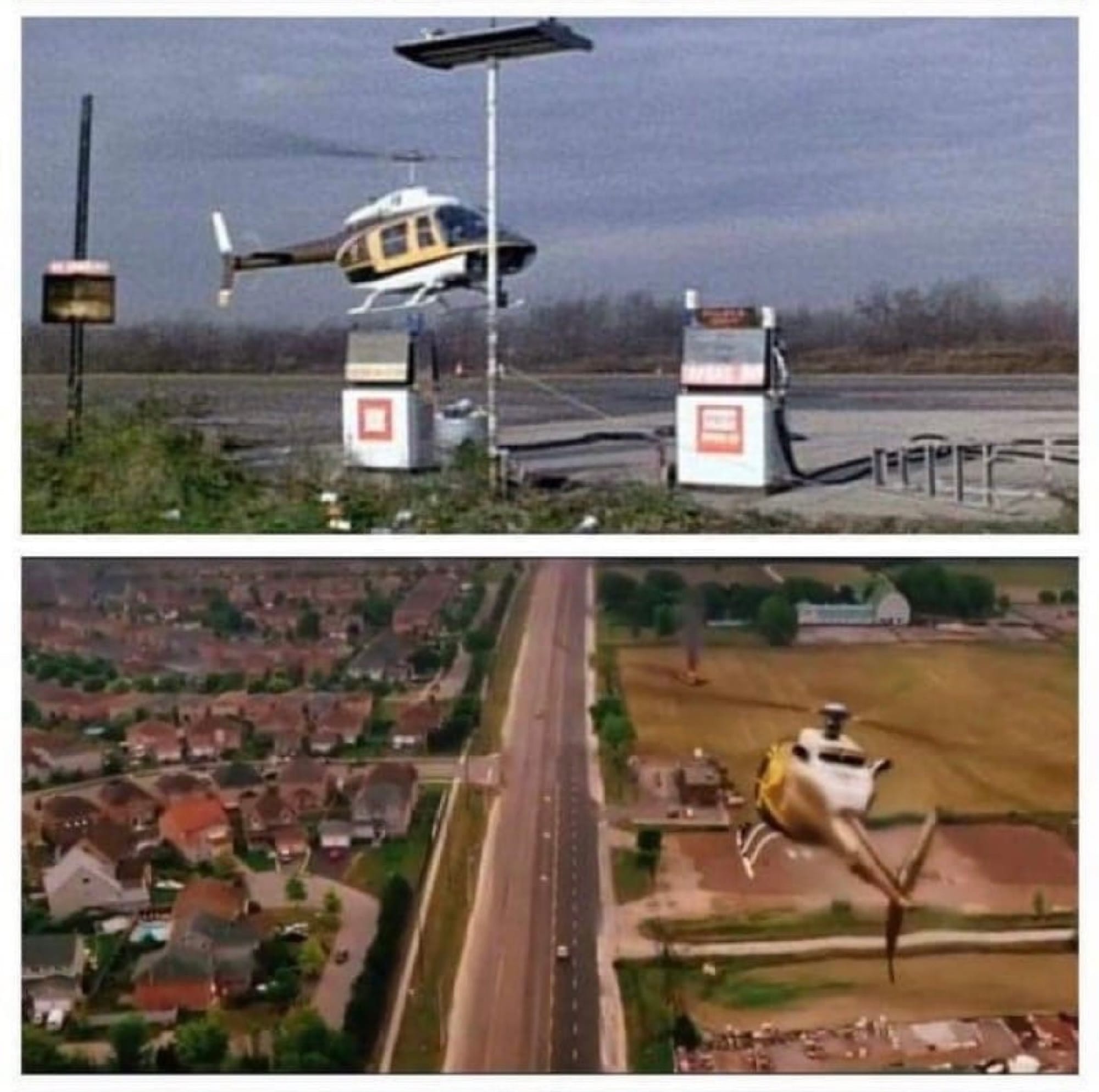
Yes, I know these are two different movies with the same title. Yes, this will technically make my list of 20 movies actually number 21. I realize this. Still, I chose both versions, because I didn't want to have to choose between them. I love them both. Some filmheads might call this blaspheme, and to those people I simply say this...
Fuck you.
So, yeah, while these are two different movies, two unconnected and separate movies, at the same time, they're not.
One of these films is the original root of my love of the zombie apocalypse genre. The other is the new bloom that reignited that love. Both of them are big parts of my love of a good post-apocalyptic fort. One film is by the great George Romero, the originator of the modern zombie as it's known in pop culture, and like I’ve said before, if I’m ever asked about my influences, I say it’s all due to: “Three Georges, a Stan, and a Stephen.” George Romero is one of those Three Georges, and the 1978 version of Dawn of the Dead is the specific reason why he is on that list. The other film was written by James Gunn, who has penned many things I've loved, and who I expect is poised to bring me so many more. In short, both of these movies are right up my alley.
But before we dive into things, we should probably clarify this...
The 2004 version of the movie Dawn of the Dead is not a remake of the 1978 version of the movie Dawn of the Dead, not in any way. They are different stories, that feature different characters, that were made for different reasons, in different contexts. Besides the title, something that the studio supposedly mandated for the 20004 version, they only share the setting of a mall, during a zombie apocalypse. The 2004 version of Dawn of the Dead is really more of a... "reimagining," which is a made-up Hollywood word meant to highlight the fact that the idea started with a similar setting, but then went it's own way. It's directly due to the fact that the 2004 version is a reimagining that I like it. Why would anyone lump a remake in with the original? Because that film tried to do something different, it was able to move out from beneath the original’s massive shadow and establish itself as it's own thing, and I loved it. So that's why I am simply unable, or at least... unwilling, to choose between them. That is why they both now occupy the 3rd spot on my list of 20 most influential movies.
Because if you know me, then you know that I love of zombie films. My first attempt at a novel was a zombie apocalypse story, one that was started long before the very first issue of The Walking Dead comic book ever hit the stands, a first person POV (of course) noir-ish action tale called Gunslingers of the Apocalypse. It was a project that was definitely inspired by both films, but especially by the 2004 version… well, 2004 version, and 28 Days Later too, even though it’s NOT a zombie film. The 1978 and the 2004 versions are why I watch so many zombie apocalypse movies now, even though so many of them disappoint me.
So many of them... but certainly not all of them.
The 1978 Version
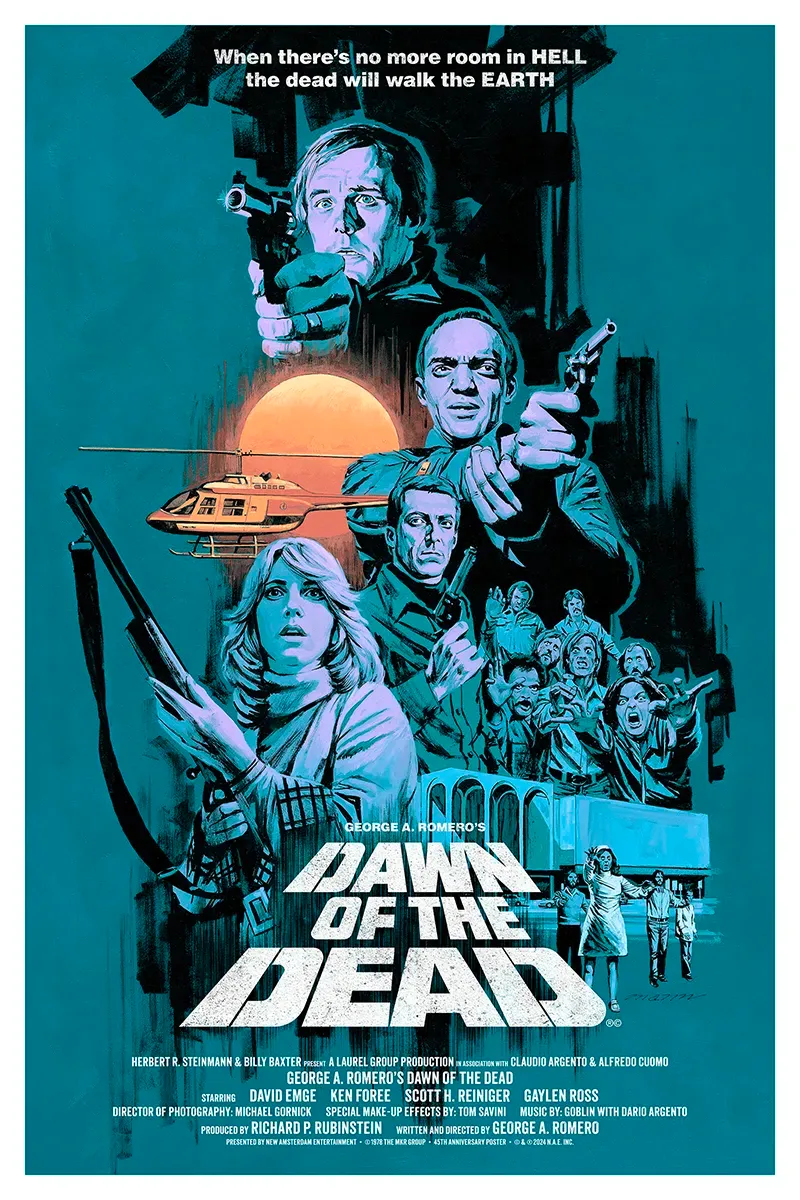
Written, directed, and edited by George Romero, with some input from Italian filmmaker and un-credited coproducer Dario Argento, and with special make-up effects by the great Tom Savini, the 1978 version of Dawn of the Dead is the second film in Romero's zombie series.
While it is not a direct sequel to the events of the first film, Night of the Living Dead (1968), this film expands on the story that began there, showing the effects of a zombie apocalypse on society, as a phenomenon of unidentified origin causes the recently dead to reanimate, and to then prey on living human flesh, bringing about the collapse of civilization and the end of the world.
I know that Romero preferred the Thetrical Cut that was released in America, but I'm a fan of the Extended Version, sometimes known as the Cannes Film Festival Version, which runs 139 minutes. The Extended Version was originally assembled to premiere at the 1978 Cannes Film Festival, and while some think of it as more of a workprint, it has several extended scenes in the Mall, after the survivors first get there and clean it out, which end up having this kind of aimless hangout "what do we do now" kind of vibe that I really like.
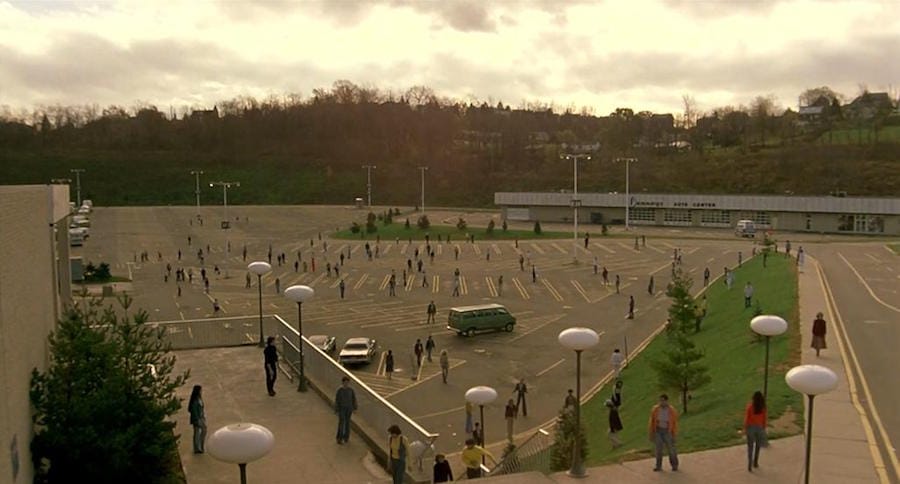
So, usually when the 1978 version comes up, there's a lot of talk about the film's satirical portrayal of consumerism. This anti-consumer message lies in the fact the film is set in a classic suburban Mall at the end of the world. It is a place filled with odds and ends and necessities and luxuries, a place the survivors are desperate to hold onto, and also a place that the hordes of zombies are shown either scratching incessantly at the doors, or in its most obvious visual metaphor, wandering along the halls and in the stores, slack-faced and vacant-eyed, as tinny muzak plays over the PA. Most importantly, in the end, this mall is the place where most of the still living characters die in a ludicrous and ultimately pointless battle to own the mall, and as a result, are then left there as zombies themselves, doomed to shuffle about within forever, and all because their greed drove them to fight over the bones of a corpse. As far as metaphorical commentaries go, it's as pointed as it is clear. It’s also about as subtle as the metaphorical commentaries that one can find in Fight Club and Starship Troopers.
I suspect that this is why people are always in such a rush to point out the film's anti-consumer metaphor, they’re just so proud of themselves for having spotted a "hidden" message.
The idea for this movie came to Romero in 1974, after a tour of the Monroeville Mall—the mall this movie was later shot in—during which he was told the mall had rooms where they kept civil defense stuff to be used in the event of a disaster, and Romero loved the idea that this "cathedral to consumerism" doubles as a bomb shelter, so it will still have value in the case that society crumbles.
So, yeah, obvious or not, and definitely a belabored discussion note at this point, the anti-consumerism metaphor is pretty central to the film…
But also... I've always felt like certain people make too big of a deal out of this, holding up what is at best an "also ran" subtext a little too much, and the reason why these people do this is because they’re trying to justify the fact that they like a zombie film. Their problem is, they can’t just allow themselves to enjoy something that they would otherwise consider to be “low-brow” art. They're artists, see, with sophisticated palettes, so they need to make this film into something objectively good somehow, into an actual piece of art, all with the attitude that maybe you just can’t see it, that perhaps it’s more complex than you hoi polloi can understand, but they can see it, so it’s okay. In order to pull this off, they make a mountain out of the molehill that is this film’s satirical jabs at materialism and consumer culture.
Maybe.
That's what it seems like to me. I'm just saying... sometimes, when some folks are going on and on about that shit, it seems like a bit of a pretentious scenester red flag to me, y'know?
Whatever.
Either way, the 1978 version of Dawn of the Dead received widespread critical acclaim upon its release, finding a place on 500 Greatest Movies Ever Made lists, as well as Best 1000 Movies ever made lists, whatever that stuff is worth, and is widely considered not only to be one of the greatest horror films ever made, but also to be one of the few sequels that surpasses the original film (although, if you ask me, that really sounds like the same kind of purely preference-based argument that drives things like the Alien vs Aliens debate. Also, obviously, I’m a “why not have both” kind of guy).
My point is, all that shit aside, the bottomline is this... the 1978 Dawn of the Dead is one of the greatest zombie films ever made. It set the tone, it drew the map, it made the mold. It's one of the first, and it's still one of the best.
So…
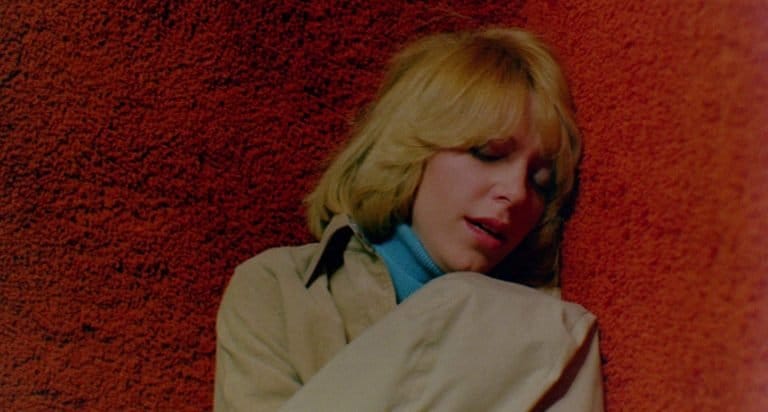
With society barely holding on by its fingertips before the relentless onslaught of the undead, WGON-TV, a television studio in Philadelphia, is struggling to stay on the air so that it can keep sending out important information during this crisis.
Meanwhile... Millions have died and reanimated. The dead fill the street. Despite the government's best efforts, social order is collapsing. The National Guard and local militias are fighting the zombie hordes in the rural areas, but the city centers have descended into chaos. Law enforcement is engaged in all-out battles against both the dead and the living, as they try to maintain the National declaration of Martial Law. It's looking bleak.
The world is teetering on the edge.
Traffic reporter Stephen Andrews and his pregnant girlfriend, producer Fran Parker, seeing the writing on the wall, decide to steal the station's helicopter to escape the city. Meanwhile, Philadelphia Police Department SWAT officers Roger DeMarco and Peter Washington, disillusioned by the heavy-handed brutality of the police, especially in the poorer neighborhoods, not to mention all of the death and destruction that comes with the ravenous Dead, decide to skip town too. Roger is planning on hitching a ride with Stephen and Fran, and he offers Peter a seat.
But from the safety of the helicopter high overhead, it quickly becomes clear that the Dead are everywhere, overrunning everything, and that no matter how far or how long they fly, nowhere is truly safe from this threat. Desperate and exhausted, the foursome finally land on top of a mall to get some rest, but upon seeing all the supplies within, they end up deciding to take it as their own. They lock the doors against the horde outside, and then clear out the Dead within.
But even once they're settled in, they're still not safe.
Not in a world where a single bite is all it takes to infect a person with the virus that will eventually kill them, and then turn them into a ravenous shuffling horror themselves. Not in a world where the horde of monsters locked outside only grows larger with each passing day, threatening to breach their walls at any moment. And certainly not in a world where humanity is more of a threat than even the dead are, driven by a hunger that wasn’t born of the virus, but from cruel greed, something the survivors learn to their detriment when a nomadic band of thugs, bikers, and bandits discover their Mall safe haven, and decide to try to take it from them...

One of my favorite things with this films is how it will forever show it’s age, like how the zombies are all painted in a shockingly fake blue-gray “death” pallor, or how, as the survivors are flying over the shopping mall, they have the following bemused exchange:
“What the hell is that?”
“…It looks like a shopping center? One of those big, indoor malls.”
Y’see, the shopping mall first appeared in 1956, on the day the Southdale Center opened in the pride of Minneapolis, its wannabe bougiest of all the suburbs, Edina. Designed by Austrian immigrant, Victor Gruen, to feel like a market in Vienna, as he believed that America had become too car-centric, Southdale was the first of its kind. It was a fully enclosed, climate-controlled wonderland of idle shopping and occasional snacking, and the Southdale Center design then went on to define the look and feel of the modern shopping mall as we know it, an unimpeachable symbol of American prosperity, wealth, and success.
It’s closed now.
But in 1977, the shopping mall was still pretty uncommon in many parts of the country, so for the survivors, it was shocking to discover this building filled with everything they could ever want or need, an embarrassment of riches, a veritable cornucopia of abundance, offering comfort and luxury while the end of the world happened outside. So it makes sense that they’d fight so hard to make it theirs.
Plus, it really did make for a great fort.
And yet, at the same time, this situation also taught those of us out there who spend a perhaps inordinate amount of time considering options when it comes to our Zombie Apocalypse Emergency Plans a very valuable lesson when it comes to surviving in the Wastelands of the Dead… If you take a fort, then you better be able to defend it, because the scavengers are coming.
And that‘s really a core lesson, valuable in any kind of apocalypse, whether it’s from zombies or White Christian Nationalist bigots… if you want to survive the apocalypse, kids, the key is community.
I love that.
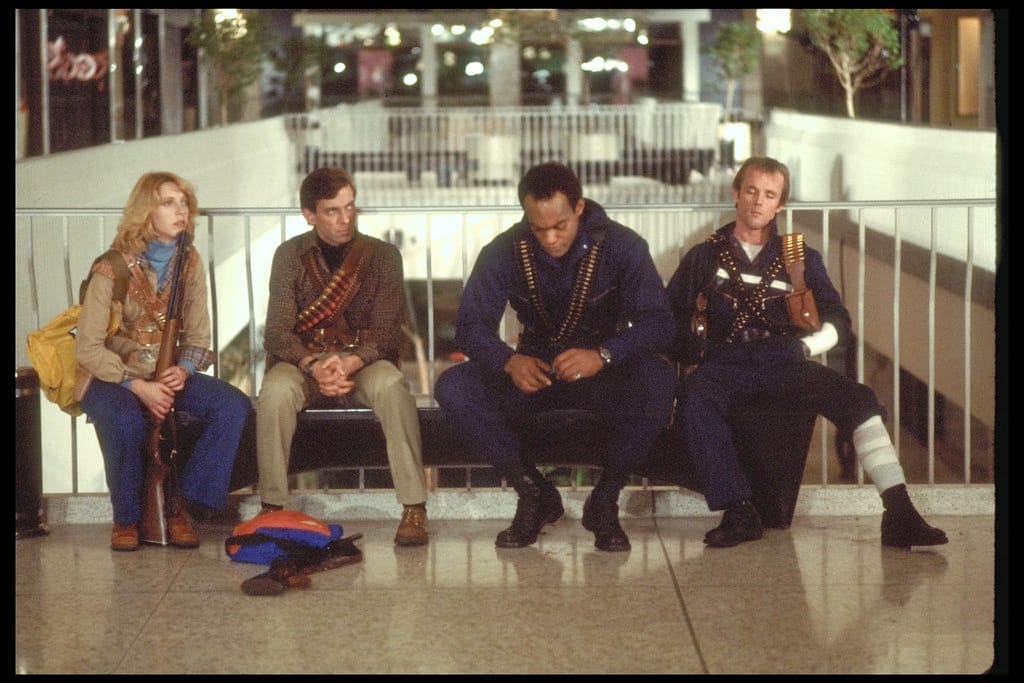
I've also always loved how there’s no reason given why the recently dead have risen from their graves. No explanation at all, nothing but Peter solemnly saying: “When there is no more room in hell, the dead will walk the Earth.” This makes the entire outbreak all the more terrible, all the more random, all the more tragic. And really, what difference would an explanation make to the characters? If it were a virus, or toxic waste, or the earth passing through the tail of a comet, what difference would it make as you sit in your post-apocalyptic fort, with a large but finite amount of supplies, no help coming, and surrounded by a sea of ravenous dead?
I'm a big fan of that approach.
Compelling, scary, and all-around entertaining, with great characters, while also being responsible for spawning the entire zombie apocalypse genre, for a scaredy cat kid who didn’t like horror movies all that much, this was one of the films that really changed that. I've never really liked the slasher film genre in general, with its parade of dumb and helpless victims. I've never connected to them like some genre fans do. But when I stumbled across films like this, stories that featured proactive characters fighting back, having agency against the horror, seeing that was like the rules suddenly changing for me.
Now, I’m all in.
The 2004 Version
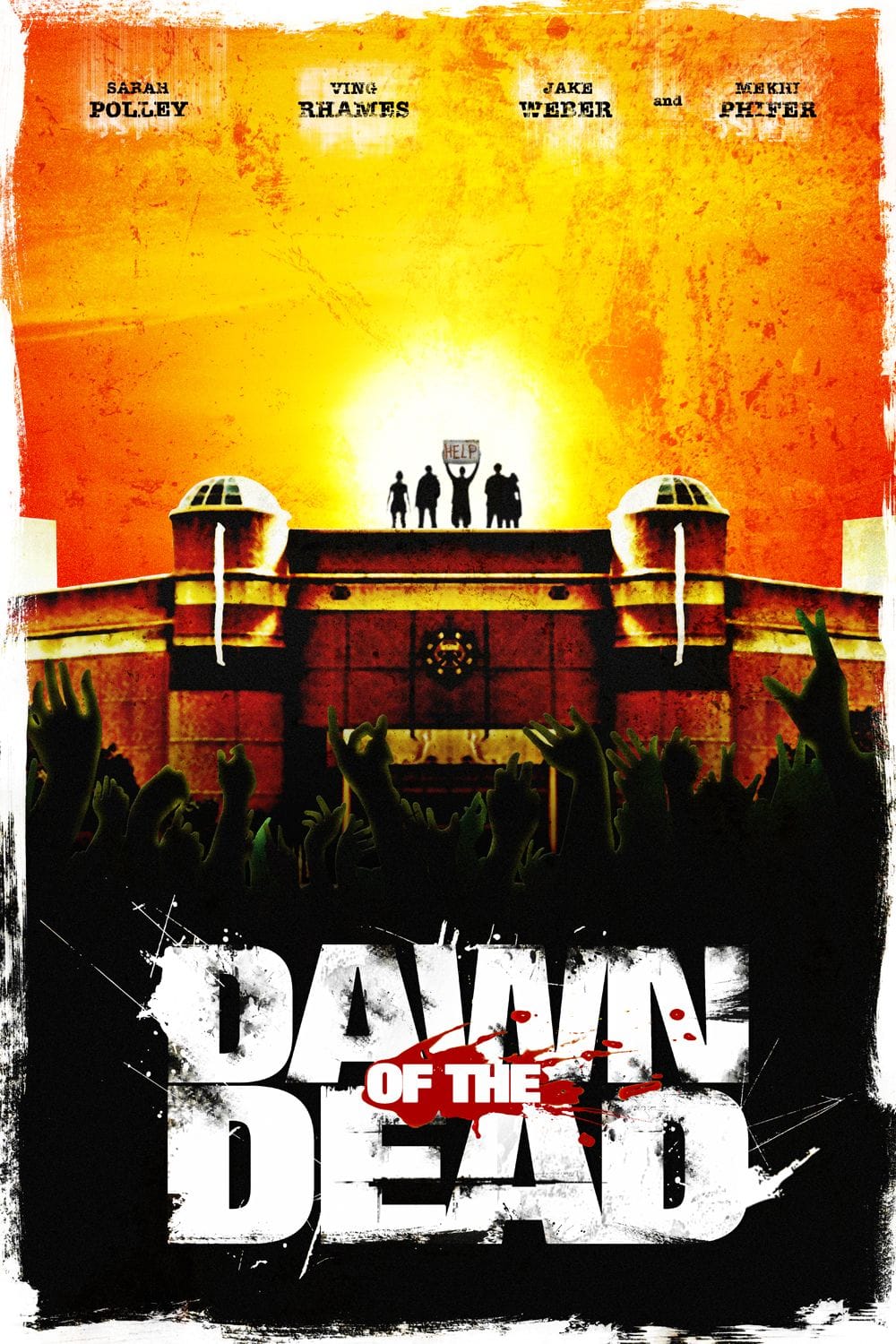
The 2004 reimagining of George Romero’s 1978 classic is Zack Snyder’s feature film directorial debut, with a screenplay by James Gunn. Originally developed as a way to re-invigorate the zombie genre in general, I think anyone who remembers the last 20 years of pop culture will agree…
It was incredibly successful.
This is the film that basically paved the way for the runaway success that is The Walking Dead franchise, as well as a plethora of other TV shows and films, not to mention a slew of zombie apocalypse video games. In the 2010 edition of his book Danse Macabre—his 1981 non-fiction book that explores horror fiction in TV, film, radio, print, and comics, and how contemporary societal fears influence the genre—Stephen King applauded this film not only on being able to find its own identity separate from the original, but for its commentary on the sudden, random horrors that can come with terrorist attacks, connecting the zombie apocalypse genre to a post-9/11 America. And South Korean filmmaker Yeon Sang-ho cited it as a major influence upon both Train to Busan, and its sequel, Peninsula.
In short… It was hugely influential in the genre.
This is also the film that introduced the ”controversial” idea of fast-moving zombies, which is now mostly just older fans—boring gatekeepers by nature—still griping to this day about small changes to genre tropes, kids being on their lawns, and basic shit like that. A lot of people credit 28 Days Later with doing this first, the whole running zombie thing, but again… 28 Days Later is not a zombie movie, so that’s not true. Romero supposedly wasn’t a big fan of this film, which is fine, he doesn’t have to be, and besides, I don’t think we want to start holding the idea of “real” zombie films up against some of his later output… And there were also a lot of critics who lamented this version’s lack of an “anti-consumerism” message, but that’s just more gate-keeping genre-scenester nonsense too. Honestly, Romero's consumerist metaphor has lost a lot of its skewering point in the decades since its initial release, especially now, 40-some years later, on the far side of the 1980s, as we find ourselves living in a society where Billionaires like Elon Musk, Zuckerberg, Bezos, and the Kardashians are kings. Like, “ooooh, you buy things that make your life a little brighter while living in this dystopian Christian Fascist hellscape we live in? You monster.” So edgy.
But whatever… either way, the 2004 version went on to be a commercial success, and a huge genre success too, and is widely considered to be Snyder’s best movie by a country mile, especially the opening sequence.
So...
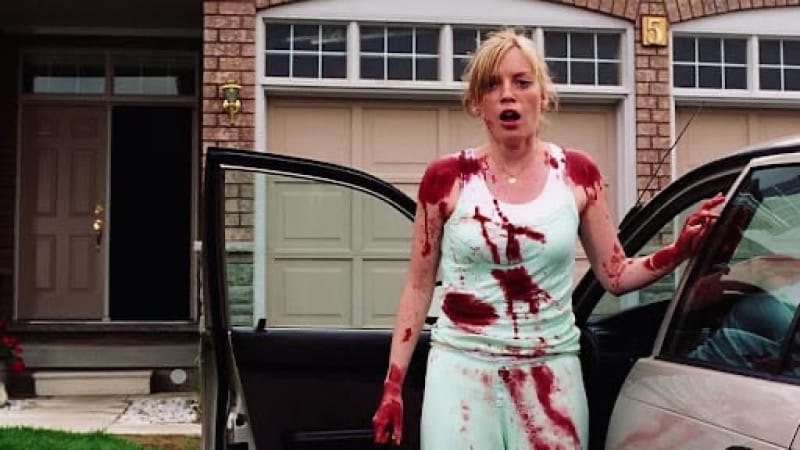
After finishing a long shift as a nurse in a strangely busy Emergency Room in a hospital in the Milwaukee area, Ana returns to her suburban neighborhood and her husband, Luis. Caught up in the romance of their scheduled date night, they miss an emergency news bulletin.
The next morning they wake up to find zombies… everywhere.
Luis is killed, but Ana barely manages to escape their house, driving off into the chaos of a collapsing city. She eventually meets up with a small group of survivors and they all take refuge in a local mall. From the mall roof, they see the city-wide destruction, and also another survivor, Andy, who is stranded in his gun store all the way on the other side of the zombie-infested parking lot. They send messages back and forth via white boards and binoculars.
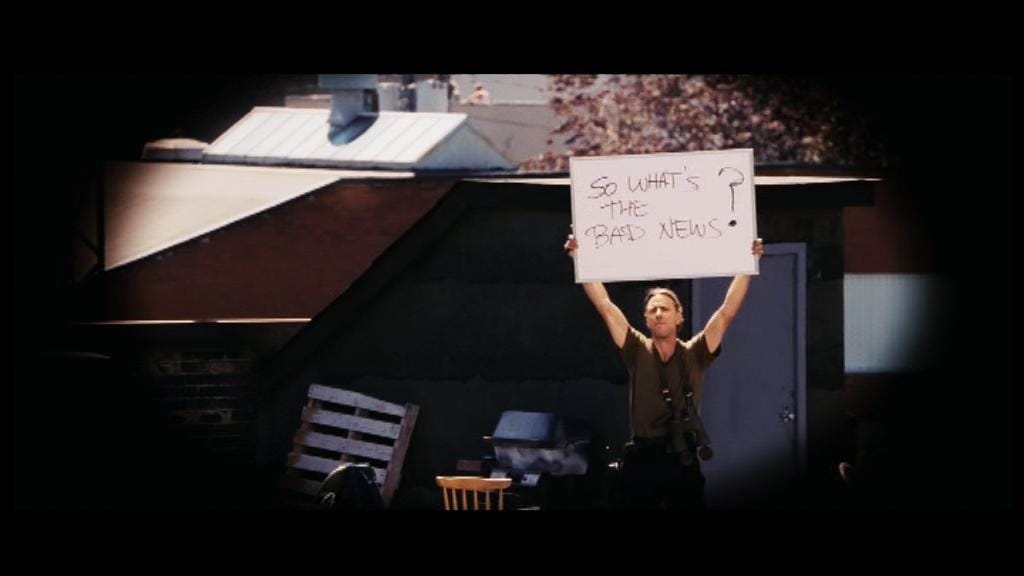
Here we see the first inkling of a secondary problem, while the survivors do have plenty of supplies in the mall, they have few weapons. Meanwhile, Andy has lots of weapons, but he has little food and water.
The perils of trying to survive, of trying to keep the ever-growing crowds of zombies out, all while dealing with the selfishness and stupidity of humanity and the horrors they are capable of, eventually leads to a realization that this little mall fort is not going to last. The group decides to fight their way out, to go to the local marina, where the yacht of one of the survivors is moored, and then find an island on Lake Michigan maybe, all while rescuing Andy on the way. To do this, they get busy reinforcing two shuttle buses from the parking garage.
But then an idiot and her dog ruins it for everyone.
After that, the escape goes badly, the rescue goes worse, and the trip to the marina is an absolute shitshow. In the end, what’s left of the survivors all sail away into an unknown future that… well, it doesn’t look too hopeful.
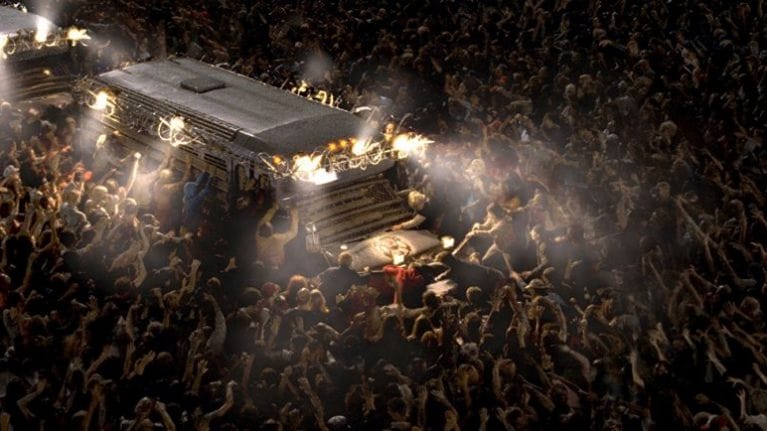
The 2004 version may not have an anti-consumerism message, but it does seem to have a bit of a commentary on American society…
Debuting in a time when 9/11 was still a fresh wound, and its poisonous effect on the future of this country, not to mention the entire world, were just beginning to reveal itself, America was ripe for the re-emergence of zombie genre. It’s a genre that can often play on fears of biological weapon use in a sudden terrorist attacks, or societal breakdowns bringing violent lawlessness to “good” people’s doors, just to mention a few potential themes, all of which lean hard into a panicked need for apocalyptic preparedness and mass militarization, with the whole thing wrapped up with a nice bow by asking after one of America’s most deep-seated fears... the question of just who exactly are our neighbors truly are. Despite being popular on a global scale, the zombie apocalypse genre really feels like a uniquely American invention, aimed specifically at our hearts and fears.
While the 2004 version of Dawn of the Dead definitely had a much more action-oriented intent, instead of the more traditional expectations of a horror one, it still remained faithful to large parts of Romero’s original premise. Not just in its setting either. For example, it also left the origins of the zombie apocalypse vague too.
But the main way the 2004 version differentiates from the original 1978 film is the how it hinges on the idea that the relentless press of the zombies is inevitably going to lead to the characters having to evacuate the mall. The original, of course, ended with two groups of living people fighting each other, which was the reason that our heroes had to abandon the mall, making it more about the question of who the real monster was, the living or the dead, which is some classic zombie stuff. The 2004 version is basically just humans versus zombies, and since the zombies are merely mindless vehicles to spread the infection, there’s no real good vs evil conflict here, it’s only about survival, basically Man vs “Nature” rather than Man vs Man.
Although, to be fair, the Man vs Man commentary could come later. The original film was set maybe a month into the zombie apocalypse, give or take, and when the story ends, it’s a couple of months later, perhaps? Whatever it is, it’s well past the point where the world has fallen. The 2004 version, meanwhile, starts in the first few hours of the crisis, and ends maybe a week or two later, so maybe humanity just hasn’t quite had a chance to get truly desperate for resources yet.
So, as a result, the 2004 version is more about the question of redemption, of random strangers losing everything and having to band together, to survive by relying on each other. It's more a story about the need for community support than the original, showing how some will rise to occasion and thrive, and how some will simply refuse to think of others, no matter what. That’s a message that, in the wake of Trump and COVID, suddenly seems very timely, huh?
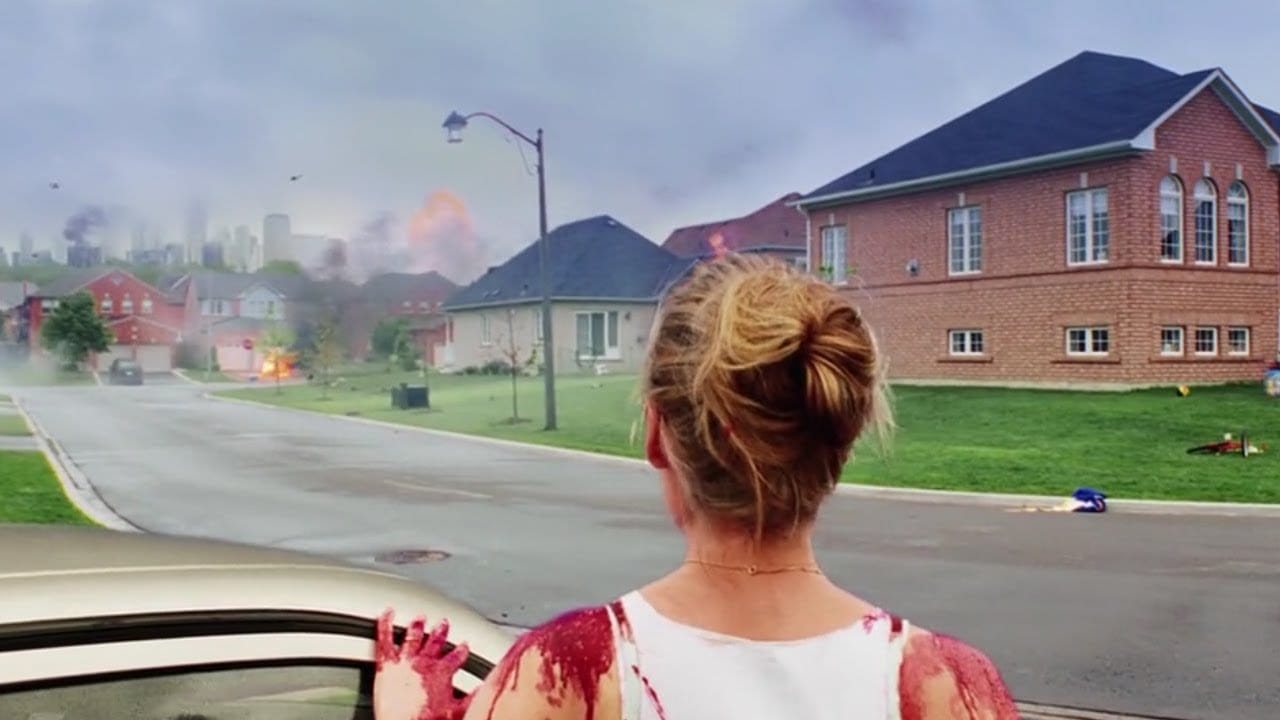
Opening in early March, just outside the February dead zone in 2004, Dawn of the Dead out-performed The Passion of The Christ its opening weekend, knocking that film off the top spot on the box office list. This proved once and for all that the only thing better than a film with one zombie, is a film with a whole bunch of zombies. This is why zombie apocalypses are a more popular setting in general than a small zombie outbreak films.
Yes, I will freely admit that the 2004 version is all-around not as good as the 1978 version. That’s fair. But it’s still really fun.
Any flaws that the film has, and yeah, it does have some, are mostly due to the Studio’s obvious cold feet that pared the theatrical release down to the bone. Much like the original theatrical release of the first X-Men movie, the original screenplay had a stronger story than what eventually made it to the screen, and the ghost of that stronger story is just visible if you watch closely. Its other flaw are mostly due to the kind of shit Snyder would later become famous for embracing, but in this film, when Snyder is still in a sort of proto-stage, they’re really not that bad, or at least, not as bad as they could be. Perhaps Snyder was kept in check by the fact that Gunn is simply a better storyteller than he is. Despite these issues, even if this film isn’t technically a remake, it’s definitely one of the best remakes out there.
I love it.
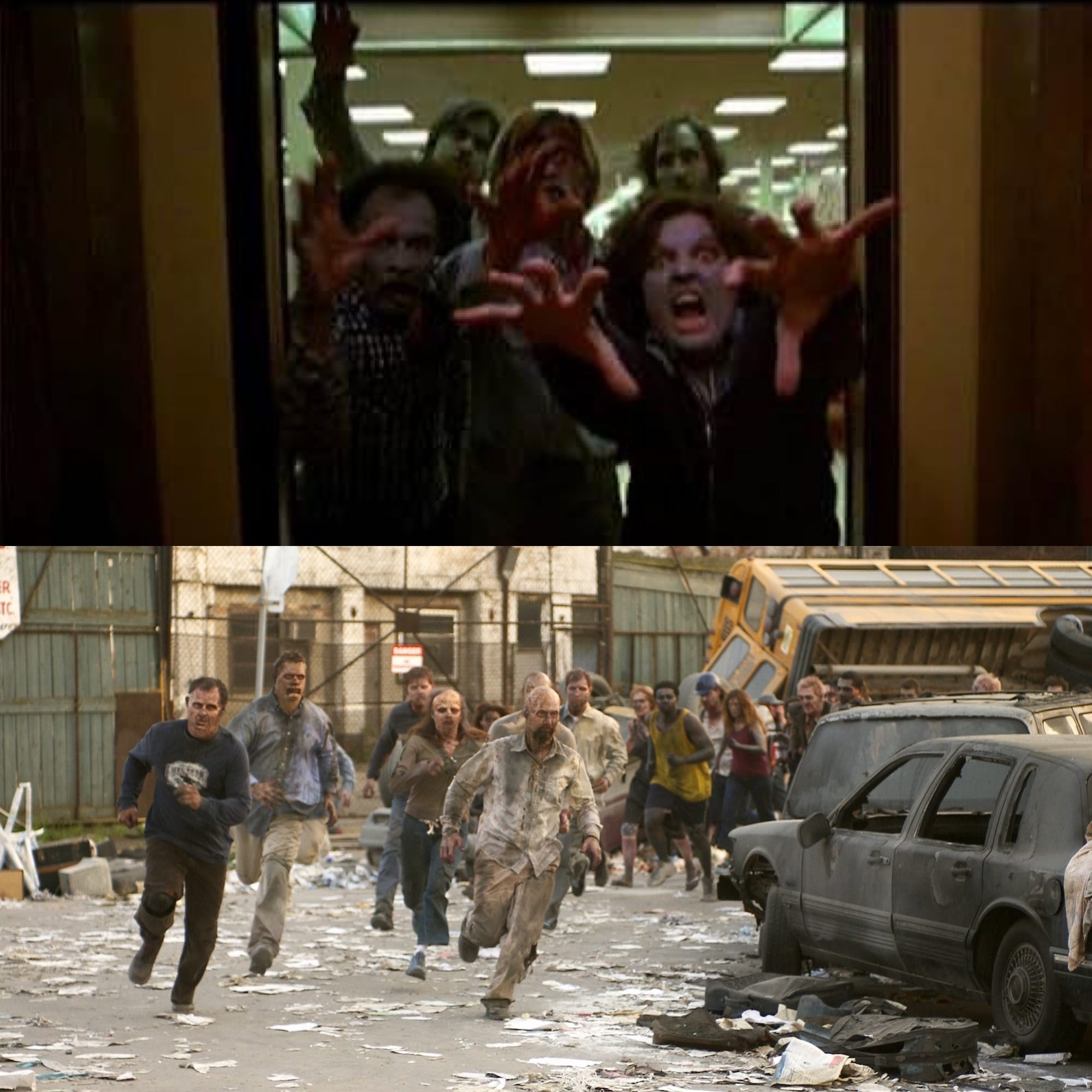
In the end, for all their messages and commentaries and metaphors, these films are both just plain old fun... different from one another, and definitely products of their respective times, but still fun.
One started the genre, one reinvigorated it.
Both are a good time.
